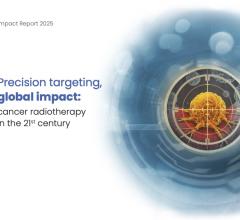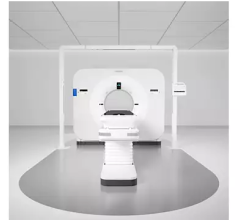March 27, 2009 - Two lasers may be better than one when attacking cancer cells, according to a paper by Rice University scientists in which the researchers found that attacking a tumor with two near-infrared lasers can heat it more thoroughly than a single laser.
Yildiz Bayazitoglu, Rice's H.S. Cameron chair professor of Mechanical Engineering and an authority on heat transfer and fluid flow, and doctoral student Jerry Vera are using computer simulations to quantify the effect of heating nanoparticles with near-infrared lasers to kill cancer tumors without damaging healthy tissue.
They hope to raise the efficiency of destroying tumors by fine-tuning methods of heating them based on the size and composition of not only the tumor but also the surrounding tissue.
The paper summarizing their results, "Gold Nanoshell Density Variation with Laser Power for Induced Hyperthermia," is published in the January issue of the International Journal of Heat and Mass Transfer. For tumors as large as one centimeter, simulations showed opposing lasers surgically inserted via fiber optics in a minimally invasive procedure produced the most uniform temperature profile in every case.
Lasers and nanoparticles are already being used to treat cancer. A Houston company founded by Rice scientists Jennifer West and Naomi Halas, Nanospectra Biosciences, Inc., is conducting human tests of a system that uses nanoshells heated by near-infrared lasers to kill tumors. Bayazitoglu, West and Halas are all part of Rice's Laboratory for Nanophotonics.
The Bayazitoglu group's approach would refine such treatment by taking into account the light-scattering properties of nanoparticles. Their concern is that nanoparticles near the surface of a tumor will block a laser from reaching those at the center.
"Think about it this way: If you're driving on a very foggy night, you can only see just so far no matter how good your headlights are," wrote Vera in an article about the research. "That's because the millions of small water droplets in the air absorb and scatter the light, deflecting the beams from your headlights before they can reflect off of whatever's ahead of you on the road.
"Nanoparticles dispersed within a tumor do exactly the same thing. They're very good at absorbing laser light and generating heat, but within particularly thick tumors, that same quality prevents a lot of the light from reaching deeper into the tissue."
Bayazitoglu said this phenomenon, called "extinction," is "highly undesirable." A uniform temperature profile of at least 60 degrees Celsius has to be created to kill the whole tumor. "Raising the temperature on one end but not the other will simply allow the tumor to re-grow, and that doesn't solve the problem - or cure the patient."
The density and placement of nanoparticles in the tumor are important, said Bayazitoglu. "Ideally, you should put nanoparticles at the center of the tumor, then kill it from the center out," she said.
Laser treatment may be effective even if nanoparticles are not used, she said. "If the tumor has good absorption properties, slow heating can do a good job of killing the cancer, because the heat has time to get inside. If you're doing that, sometimes it's better not to use nanoparticles."
With so many tissue types and the great variety of cancers people face, the importance of accurate simulations cannot be overemphasized, the researchers said. They hope the ability to calculate scenarios will allow doctors to find the best laser therapy to produce the perfect heating environment.
Notes: The research was funded by the Alliances for Graduate Education and the Professoriate program through the National Science Foundation.
For more information: http://tinyurl.com/dx7qlj


 December 11, 2025
December 11, 2025 









